If you live for texture on your leaves, look no further than the Philodendron Rugosum, also known as the Pigskin Philodendron, Naugahyde Philodendron, or the Sow’s ear plant. An exquisite vining plant with textured, dark green leaves with an almost lime green center. The leaves are coriaceous, lending to the common name of “Pigskin Philodendron” The most interesting feature of the Philodendron Rugosum is its thick and leathery leaves, which sets it apart from many others within the Philodendron genus.
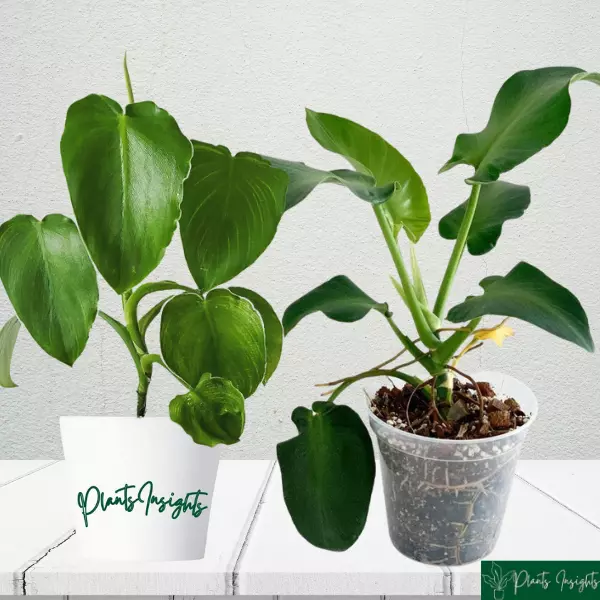
It is a very rewarding houseplant for both beginners and seasonal plant parents with minimal care! Philodendron Rugosum is typically an expensive and hard-to-find house plant; therefore, we have gathered the best growing tips for optimum care to preserve it for future generations.
Closely-Related Allied Species: Philodendron White Knight, Philodendron White Princess, Philodendron Splendid, Philodendron Florida Ghost, Philodendron Verrucosum, Philodendron Brandtianum , Philodendron Spiritus Sancti , Philodendron Moonlight.
Essential Products
Origin and Family
| Botanical Name: | Philodendron Rugosum |
| Family Name: | Araceae |
| Other names: | Pigskin Philodendron, Naugahyde Philodendron, Sow’s Ear Plant |
| Plant Type: | Climbing perennial |
| Origin: | Ecuador |
| Color: | Vivid green |
| Leaf Shape | Heart-shaped textured leaves |
| Height: | 6 to 15 feet |
| Humidity: | at least 50% |
| Temperature: | 18°C to 27°C (64-80°F) |
| Light Need | Bright, indirect light |
| Propagation | Stem cutting & Air-layering |
| Preferred pH | 5.6 – 7.5 |
| Soil type | Well-drained organic soil |
Philodendron Rugosum is a species of plant in the family Araceae and is endemic to Ecuador; however, it is now on the Threatened Species list due to vast habitat loss 😔. Its natural habitat is the subtropical or tropical moist montane rainforests of Ecuador, where it grows at heights of up to 5000 feet in the Andes highlands. It’s only been very recently described in the literature since 1983 however was discovered in 1979 by Tom Croat.

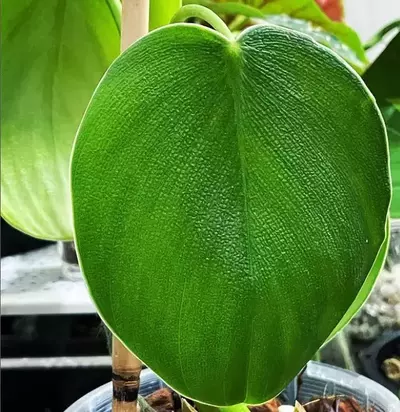
The name “Rugosum” comes from the Italian word “ruga,” which means “wrinkle” referring to the leaf texture. It is also famous with another name, “Sow Ear” due to its thick leathery leaves curling up at the petioles, resembling Alien Pig ears.
Rugosum has been declared nearly extinct by the International Union for Conservation of Nature (IUCN), making it a rare plant. Therefore, taking care of this rare plant is of prime importance if you are fortunate to have one.
A Closer look of Philodendron White Rugosum
What Is the Philodendron Rugosum Aberrant Form?
The aberrant form is a deviation from the standard form with contorted leaves due to a natural mutation. This quite unique-looking mutation of Philodendron Rugosum is known in the trade as the ‘Aberrant form’. Rugosum Aberrant features elongated heart-shaped foliage with curly edges folding up at the petioles like an Alien pig ear. On the other hand, the Original Rugosum has round fat leaves with white veins around each leaf’s border, which is difficult to see unless you’re closely inspecting the plant.
The mutation mentioned above has become so popular in the trade that it is nowadays rare to find the standard heart-shaped leaf form.
How do you take care for a Philodendron Rugosum?
Philodendron Rugosum has gained popularity due its low maintenance and unique thick leaves with a textured, corrugated surface resembling leather or hide. With moderate humidity, bright indirect light, and moist soil, this tropical plant happily grows its quirky, wrinkly leaves indoors and outdoors.
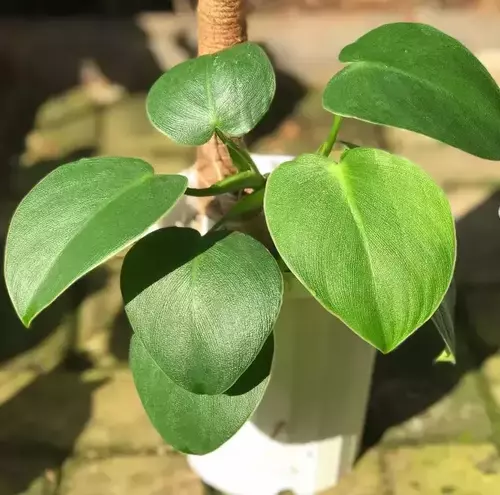

Philodendron Rugosum Growth and Size
Philodendron Rugosum is a tropical plant from the Ecuadorian rainforest that can grow up to six to fifteen feet tall when grown in an environment mimicking its natural habitat. Like many Philodendrons such as Spiritus Sancti and Florida Ghost, it grows as an epiphyte on rocks or around trees in its natural habitat.
Since it can grow as a hemiepiphyte, they climb up other plants, using aerial roots to reach out to sunlight. Philodendron Rugosum can grow more than one-foot large unique textured leaves in optimal conditions. However, you may find the Rugosum plant with variations in its leaves’ size and shapes, but they all are easy to care for climbing plants.
Is Philodendron Rugosum a climber?
Philodendron Rugosum is a slow-growing climbing plant that has a vine-like growth habit. The plant grows aerial roots that cling to something to climb and absorb nutrients. Therefore, providing a moss pole to Philodendron Rugosum helps it attain its full potential. I have noticed this plant grows faster and has larger leaves when mounted to a moss pole as the aerial roots can absorb moisture and nutrients from the moss pole. Remember to keep the moss pole moist.
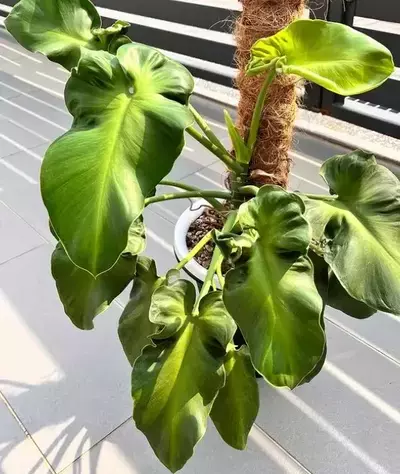

Temperature and Humidity
Philodendron Rugosum is a tropical climbing plant; hence you need to mimic its natural habitat for this plant to thrive by providing a warm, humid climate. Naugahyde Philodendron easily adapts to average home conditions and thrives best at temperatures ranging between 64 to 80 F (18 to 27 C). Sow’s Ear Plant is a warmth-loving plant and will struggle in extreme temperatures resulting in stunted growth.
Pigskin Philodendron can be grown indoors as a house plant and outdoors in tropical places and USDA hardiness zones 10b to 12. When growing outdoors, plant it near trees and shrubs to protect it from any direct sun and to provide support for climbing.
If the temperature tends to drop below 59 F (15 C) in winters, it would be best to keep your philodendron outdoors in summer, then bring it back indoors in winter. Moreover, it is not frost-hardy and may suffer permanent leaf and root damage.
Similarly, exposure to higher temperatures (above 86 F (30 C)) stresses this plant, and the leaves will begin to droop and wilt. Therefore, keep this plant away from a radiator or a heating vent, an air conditioning unit, or drafty windows and doors.
Using a hygrometer to monitor the temperature and humidity can make your life easier.
Humidity
Philodendron Rugosum is resilient to withstand the average home humidity of around 50%. However, being a tropical plant, it loves moisture and will thrive in humidity levels of at least 60%. An increase in humidity helps the plant thrive with dark full-sized green leaves. There are a couple of ways to increase the humidity of your plants;
- Mist your plant regularly, ensuring an airflow to dry the water droplets; else can result in bacterial leaf spots.
- Use a plant humidifier.
- Put all your tropical plants together in one place to increase the humidity level due to transpiration.
- Use a pebble tray half filled with water and place the pot on top.
- Place your plant in the bathroom where it is more humid.

Soil Requirement
Philodendron Rugosum is Aroid that prefers an airy, well-draining, and moist medium to grow. Philodendron Rugosum like other aroids, is hemiepiphtyes as they start life in the soil of the forest understory and slowly climb the trees using aerial roots. Such growth habits make them adaptable to a loose and organic-rich substrate that allows aeration to the roots.
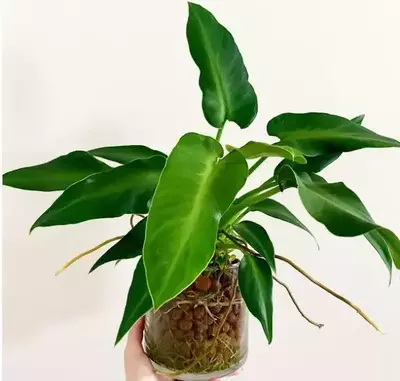
Philodendron Rugosum grows happily in any good Aroid mix that is airy and well-draining. The plant doesn’t like to sit in damp soil as it can cause root rot. Regular potting mix is a too dense medium for the Pigskin plant as it doesn’t let oxygen flow to the roots and causes poor drainage resulting in fungal problems.
You can prepare an evenly moist substrate by mixing the following ingredients;
These ingredients make a very airy and well-draining mix. The coco chip absorbs water like a sponge, but it doesn’t retain the water, so it keeps the plant roots cool, yet it doesn’t drown the roots of the plants.
Rugosum is adaptable to different substrates; hence you can mix different components, ensuring aeration of the roots.
Adding chunky and gritty components to your potting mix helps to improve aeration and drainage, thus preventing root rot and other diseases.
Moreover, you use hydroponic (a soil-less) medium like sphagnum moss or Perlite/vermiculite to grow your Philodendron Rugosum.
Sow’s Ear Plant prefers neutral to acidic soil of around 5.6-7.5 pH. You can use a soil test kit to measure the pH of your soil. Moreover, adding compost , mulches or diluted aluminum sulfate lowers the pH of your soil.

Water Requirement
Like all Aroids, Philodendron Rugosum does not like to sit in soggy soil but instead prefers evenly moist soil. Therefore, don’t let the potting mix of Pigskin Philodendron completely dry between waterings. It would be best if you watered your Rugosum on the cusp of drying. You can insert your fingers in the soil, and if you feel the top 2 to 3 inches of soil dry, water your plant.
However, it would be challenging for some plant parents to figure out the right balance between moist and wet soil. Therefore we recommend using a moisture meter or moisture sensor to determine the dryness of the soil. In addition, using a self-watering pot helps prevent overwatering.
Depending on your climate, Rugosum usually needs watering once a week in summer and every two weeks in winter. Remember the key is top few inches of soil must dry.
Using the soak and drain method, water your Rugosum until water drips through the drainage holes. Let the excess water drains out thoroughly to prevent any root rot or fungal disease.
Bottom watering such Philodendrons has been proven successful in my experience. You can simply place your plant pot with drainage holes in a dish or tub filled with water and let the roots absorb water. Leave your plant for 30 to 40 minutes and then take it out and let the bottom of your pot dry.
In addition, you can place your plant pot in any decorative pot without worrying about waterlogging or root rot.

Light Requirement
Philodendron Rugosum thrives in bright indirect light or partial sun; therefore, we recommend keeping your plant in an east or west-facing window where it can get morning or evening low-intensity sunlight.
Rugosum reminds me of Philodendron Spiritus Sancti due to the similarity in stem and aerial roots. Both Philodendrons can be planted outside in a partial shade where they can receive filtered sunlight and stay protected from high-intensity intense midday and afternoon sun.
Philodendron Rugosum needs bright indirect light to produce beautiful, dark green large leaves. Most importantly, exposure to bright indirect light encourages the plant to grow faster and bushier with more than one-foot-long leaves. However, exposing leaves to high-intensity sunlight may burn the beautiful foliage resulting in brown spots on the leaves.
Similarly, lack of light may result in a leggy plant with smaller leaves and stunted growth. If you don’t have a bright place , using grow lights helps achieving the required amount of light.
In addition, you can also use Lux Light Meter for Indoor Plants to determine the light intensity of plant’s surroundings. A place with almost 400 FC light intensity is suitable for your Philodendron.

Fertilizing
Philodendron Rugosum does not have any special fertilizer needs. You can feed your plant with diluted balanced liquid fertilizer once a month during Spring and Summer.
Please remember to dilute the fertilizer to half the strength rather than feeding the concentrated dose to prevent foliage burning.
Moreover, you can also feed your Rugosum the Osmocot, the slow-release fertilizer, to encourage more foliage growth. You don’t need to fertilize the plant during winter when the plant is dormant.

Potting
Philodendrons prefer a well-draining pot through which oxygen can flow to the roots and drains the excess water to prevent root rot. You can plant your Rugosum in a plastic, terracotta, or ceramic pot that is permeable and with good drainage holes. You can also choose self-watering plastic or ceramic pots for plants prone to root rot.
Remember to choose the pot size depending on the root ball size. Using a large pot may not let the soil dry or aeration to the roots resulting in fungal and root problems.

Repotting
Philodendron Rugosum is a slow-growing climbing plant that may need repotting every two to three years. The rule of the thumb is when your plant is round bound, repot your Rugosum in a pot one or two sizes larger or two inches (five centimeters) wider. However, do not select a huge pot; the plant can become the prey of root rot and overwater.
Typical signs of root bounds are;
- Roots start coming out of drainage holes.
- Roots start to curl.
- The plant stops growing.
- The soil dries frequently.
You can follow the following guide to repot your Philodendron Rugosum ;

How to Propagate Philodendron Rugosum?
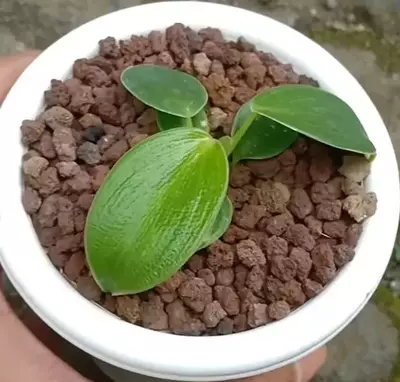
There are several ways to propagate your Philodendron Rugosum Pigskin plant;
- Dividing the offshoot plant
- Herbaceous or stem cuttings
- Stooling ( cut back your plant to ground level leaving two to three leaves to induce new growth)
- Air layering
The most common and successful propagation methods are Stem cutting and Air Layering.
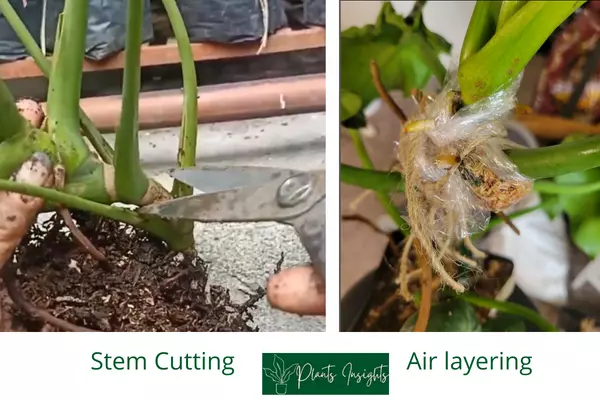
Stem Cutting
You can plant your Philodendron Rugosum in various mediums to propagate.
Water Propagation
It is the most common medium for propagation. Place your cutting in a glass, jar or water propagation station filled with water. Keep the cutting in a warm, humid place and change the water once a week. The cutting will start to root in two to three weeks. Once the new roots are about two inches long, you can plant your cutting in any suitable potting mix.
Sphagnum moss
You can fill the pot with moist sphagnum moss and plant your Rugosum cutting for propagation. Keep the pot in bright indirect light and a humid place. We recommend using a transparent pot and checking the substrate regularly to keep it moist. Once you notice enough root growth, you can repot your cutting in a well-draining potting mix.
Soil propagation
If your cutting has strong aerial roots, you can propagate that in a suitable potting mix. We recommend adding equal parts vermiculite and potting soil. Vermiculite is great for improving drainage and moisture retention for cutting to propagate.
Air Layering
Philodendron Rugosum grows aerial roots along its stem and can be propagated using air layering.

Pruning and Maintenance
Philodendron Rugosum doesn’t need frequent pruning since its a slow-growing climbing plant. However, trimming any dead or yellow leaves encourage new growth. Moreover, cleaning the foliage with a damp cloth helps prevent pores from clogging and helps plant photosynthesize better.

Is Philodendron Rugosum Toxic?
Like all Philodendrons, the Pigskin plant is poisonous as it contains calcium oxalate crystals. It is hazardous to cats, dogs, and humans, and any ingestion can cause a swollen tongue, stomach ache, trouble breathing and skin irritations.

Philodendron Rugosum Diseases & Pests
Pigskin plant is usually tolerant of pests and diseases, but many encounter a few problems.
Root Rot
Philodendron Rugosum is prone to root rot due to poor drainage or overwatering. The plant likes moist soil and aeration to the roots. If the soil stays damp it can cause root rot or other fungal problems.
Gently remove the plant from its pot and inspect the roots. If you notice any brown or black roots trim them using a sterilized scissors. Moreover, repot the plant using some fresh well-draining potting mix.
Brown Spots underside the leaves
Leaf blight is an infection caused by fungi that creates rusty color on the surface and underside of the leaves. Moreover, it spreads on the leaves by producing spores that have powdery textures. You can spray Sulfur solution to treat this problem.
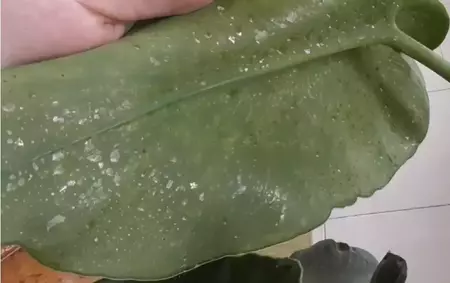
Brown spots underside the leaves could be due to guttation problem because plants perspire in the night. As it sweats it leaves like little drops of water and these drops of water if there is a lot of mineral in a soil it could have carried the mineral from the soil to the leaf of the plant and left deposits on the plant resulting in burning spots on the leaf.
Bacterial or Fungal Spots
If your Rugosum leaves have soft brown spots and yellow halo, a fungal or bacterial infection likely causes it. You can prune the most infected leaves and treat the plant with some antifungal spray.
Pests
Many pests do not infest philodendron Rugosum; however, you may notice occasional Spider mites and mealybugs. In case of infestation, shower your plant leaves and treat the leaves with a solution of one part isopropyl alcohol and four parts water. Continue spraying the leaves once a week for at least four weeks.
You can also use insecticidal soap or Neem oil to treat the pests on your plant.
FAQs
Is Philodendron Rugosum a flowering plant?
Yes, Rugosum is a flowering climbing plant that blooms rarely.
Does Philodendron Rugosum mutate?
Yes, the Philodendron Rugosum Aberrant Form is due to a natural mutation featuring elongated heart-shaped leaves with curly edges like alien ears.
Why are the leaves edges turning brown and curling at the tips?
Lack of humidity can cause brown crispy leaf edges. Browning edges of the leaves could be due under or overwatering. Moreover, using tap water also cause dry brown tips and is a sign of hard, salt-concentrated water. Too much light or heat exposure also causes curling of leaves.
Use a humidifier to increase the humidity and use distilled water for your Rugosum .
Why are Rugosum leaves turning a pale green?
Philodendron Rugosum’s key identifier is their dark green leaves, and fading of color may be due to a lack of calcium or magnesium. You can fertilize your plant or repot it with fresh, organic-rich potting mix.
Conclusion
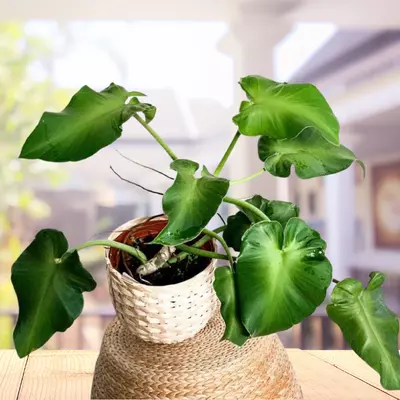
Philodendron Rugosum Pigskin is a unique and rare climbing, an evergreen plant endemic to the tropical forests of Ecuador. Although Philodendron Rugosum is challenging to find, it is worth seeking out and adding to your collection. You can refer to our care guide to grow this remarkable plant with textured leaves and can save it from becoming extinct.
Related Posts
Calathea Musaica | Network Calathea Care Guide
Calathea Musaica is also famous as famous as Network Calathea due to its characteristic mosaic pattern like a complex network on its foliage.
Calathea Fusion White Care Guide
Calathea Fusion White is a gorgeous but difficult plant with white color fusing with green on glossy leaves and purple color undersides.
Calathea Louisae Maui Queen Care Guide
Calathea Louisae also known as Calathea Maui Queen require little care to be an adoring, colorful plant boasting exotic beautiful foliage.
Calathea Zebrina | Calathea Zebra Plant Care Guide
Calathea Zebrina, the Zebra plant is a plant with dark green velvety leaves and lime green stripes giving it a pattern look of Zebra.
Rattlesnake Plant | Calathea Lancifolia Care Guide
Calathea Lancifolia gets the nickname of Rattlesnake plant due to the markings on the leaves that resemble rattle snakeskin patterns.







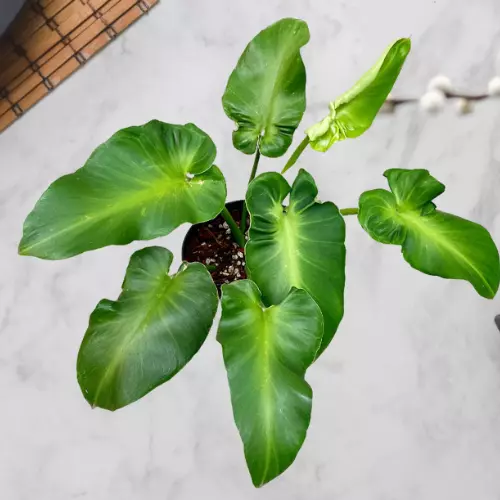

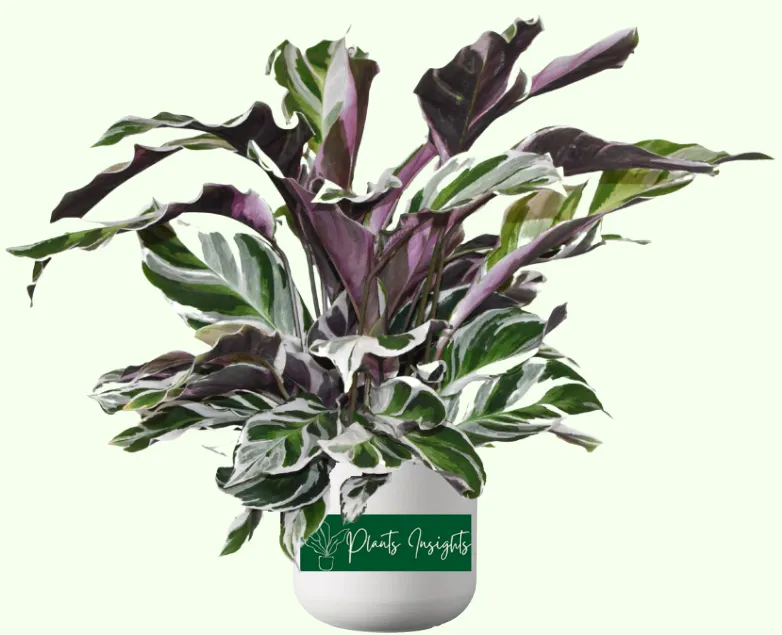
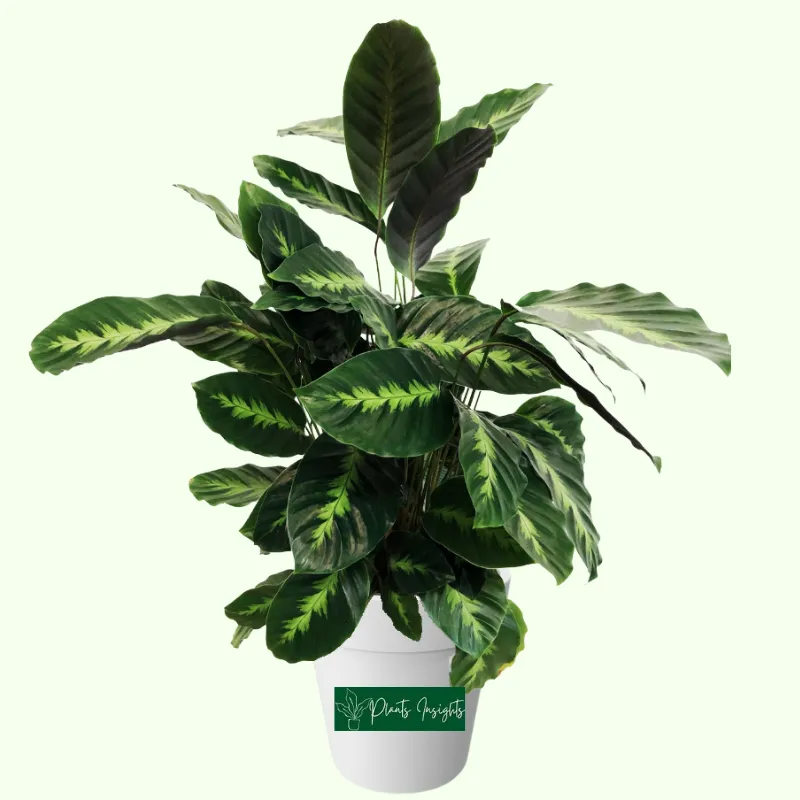
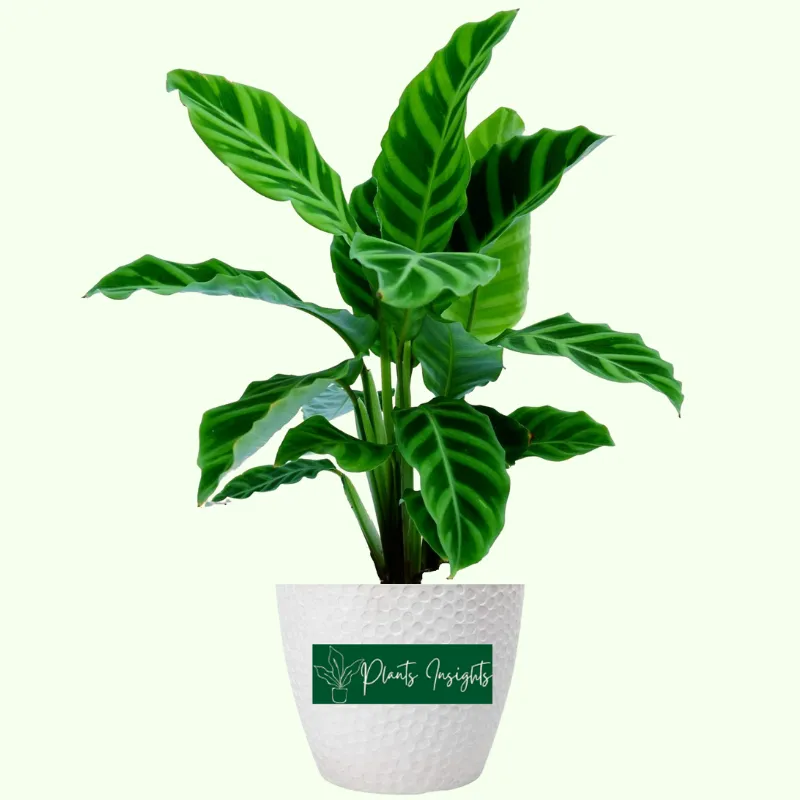

I like the efforts you have put in this, appreciate it for all the great blog posts.